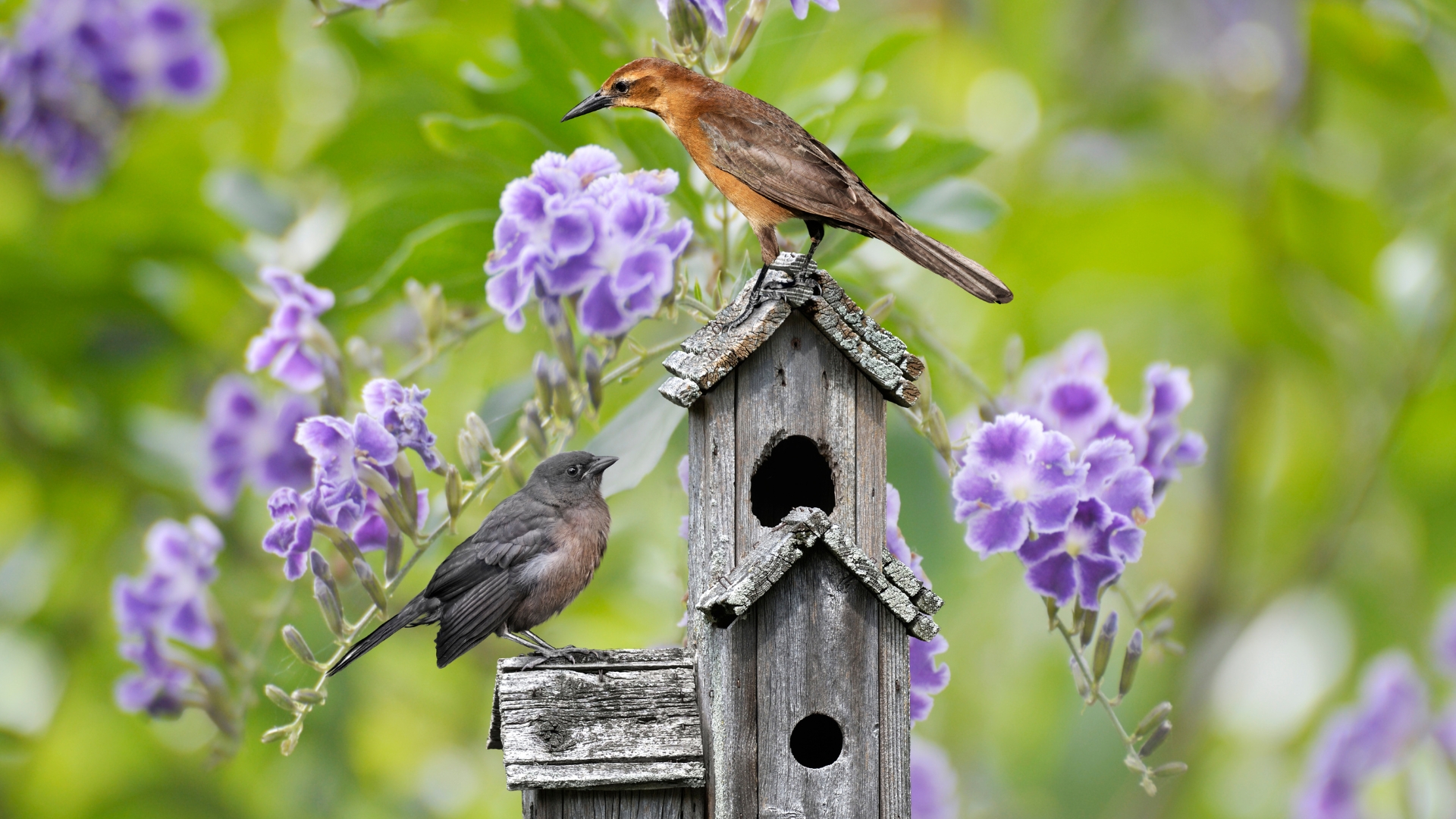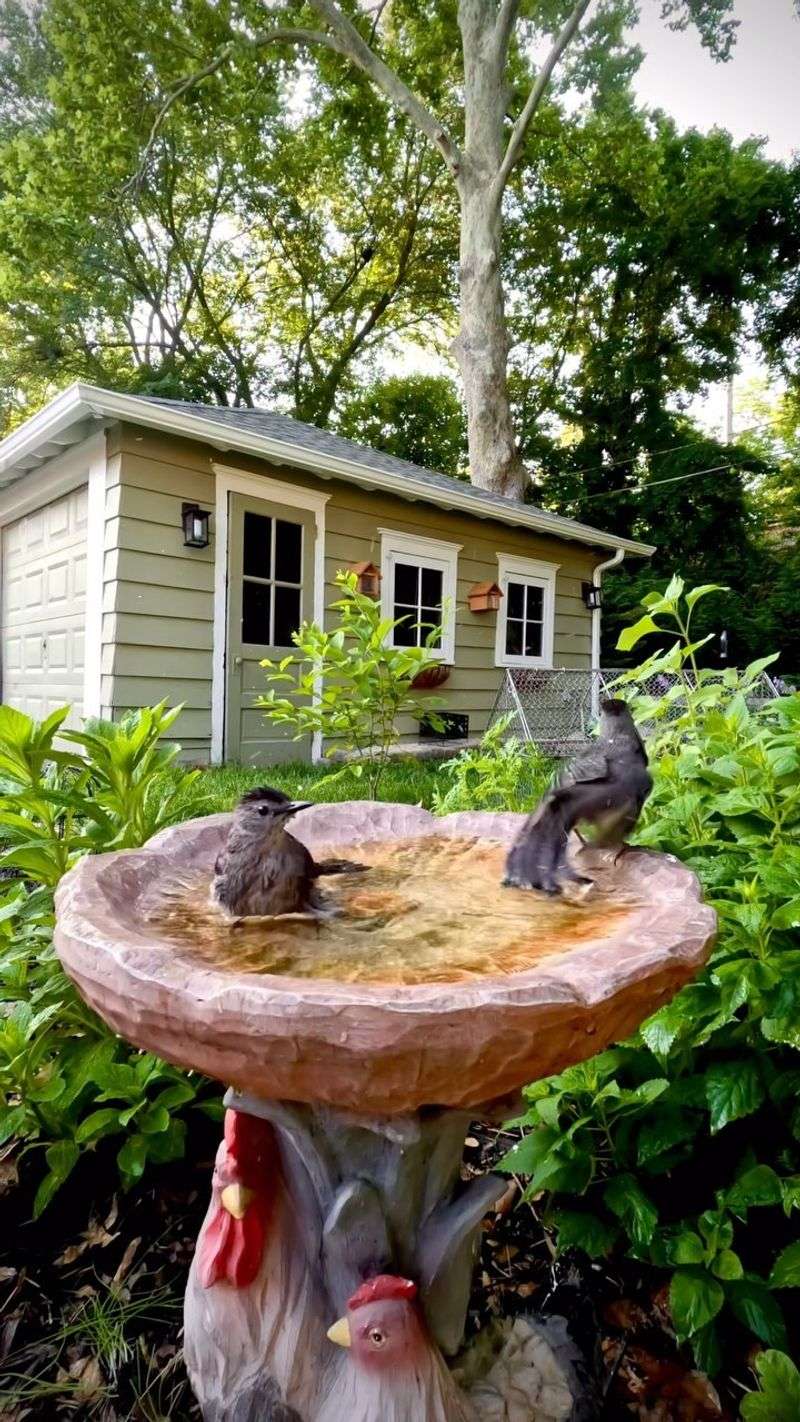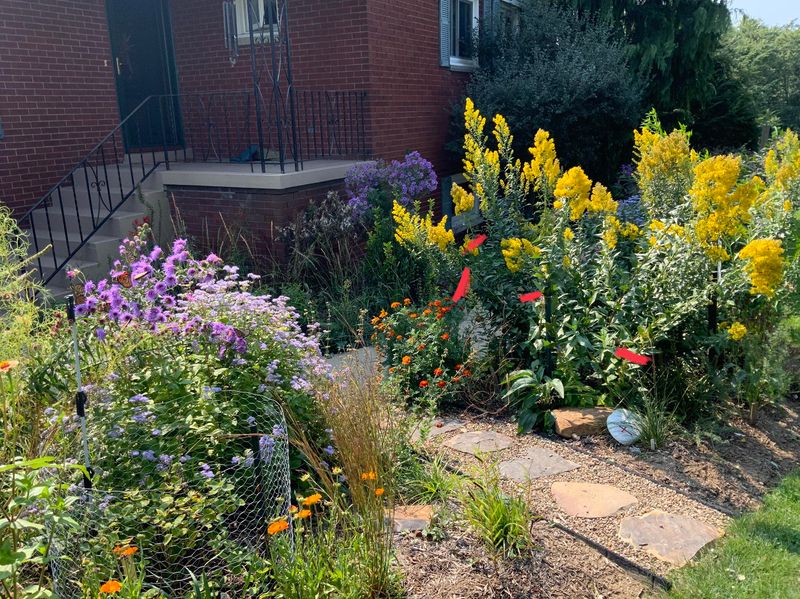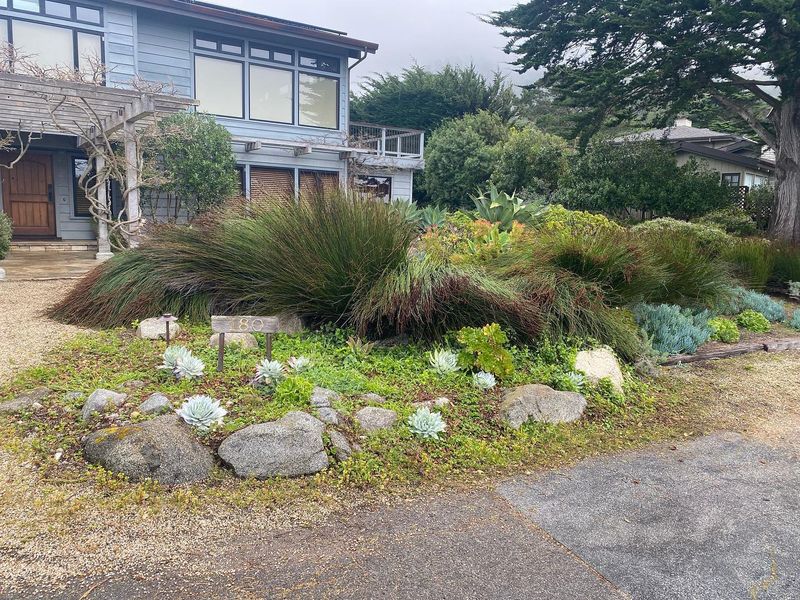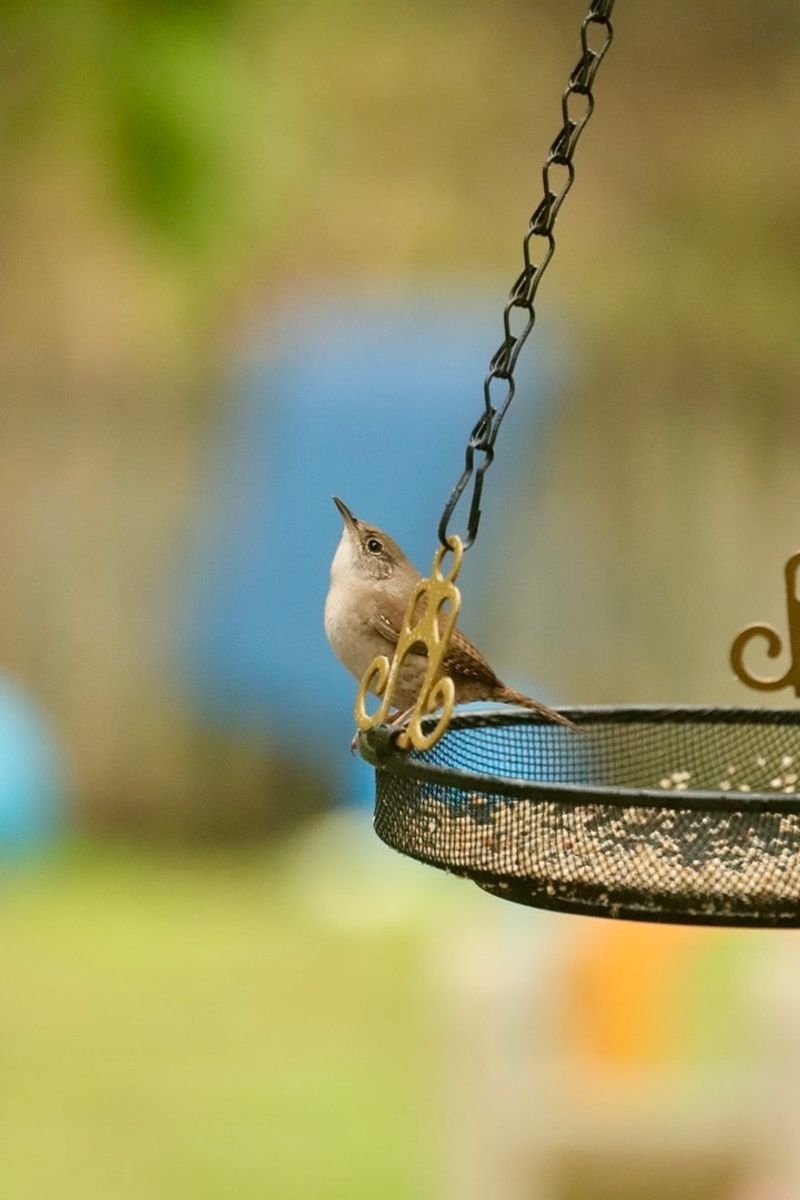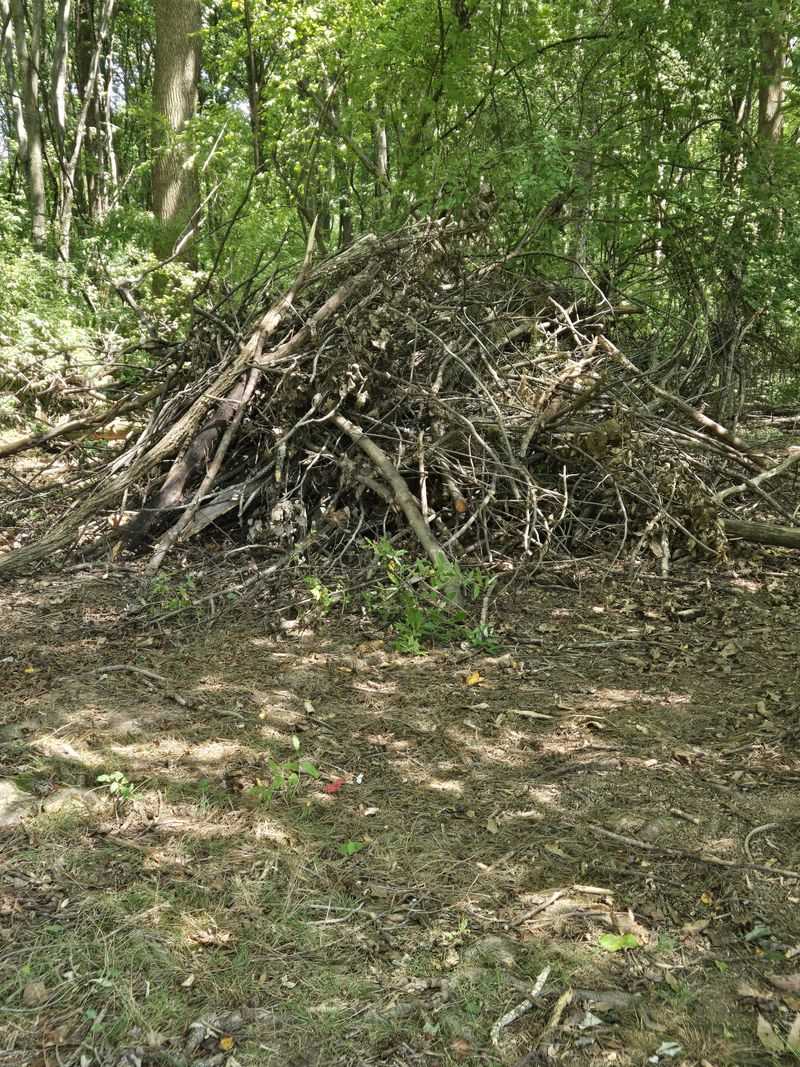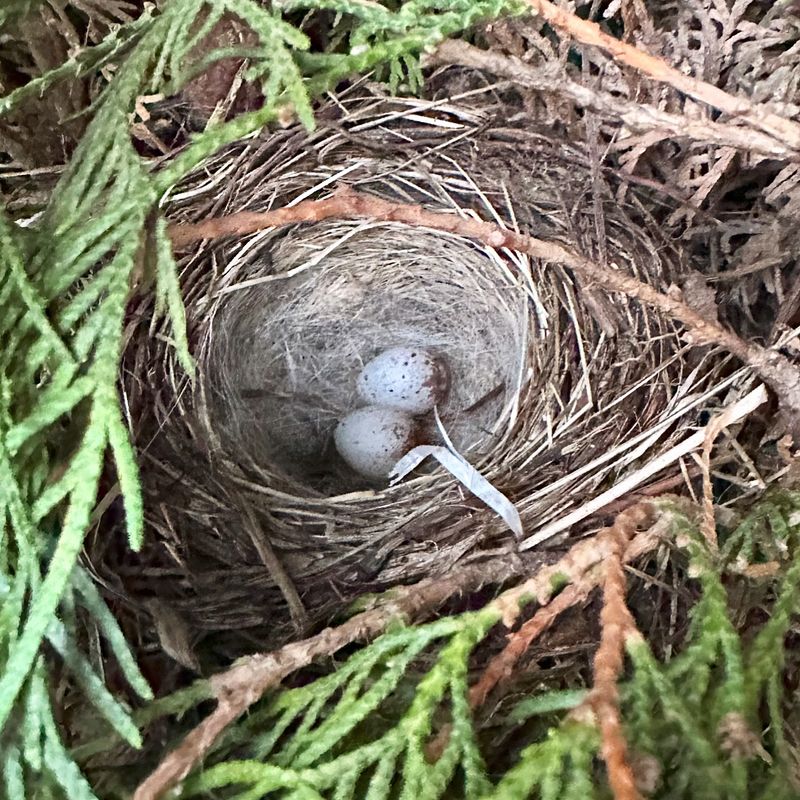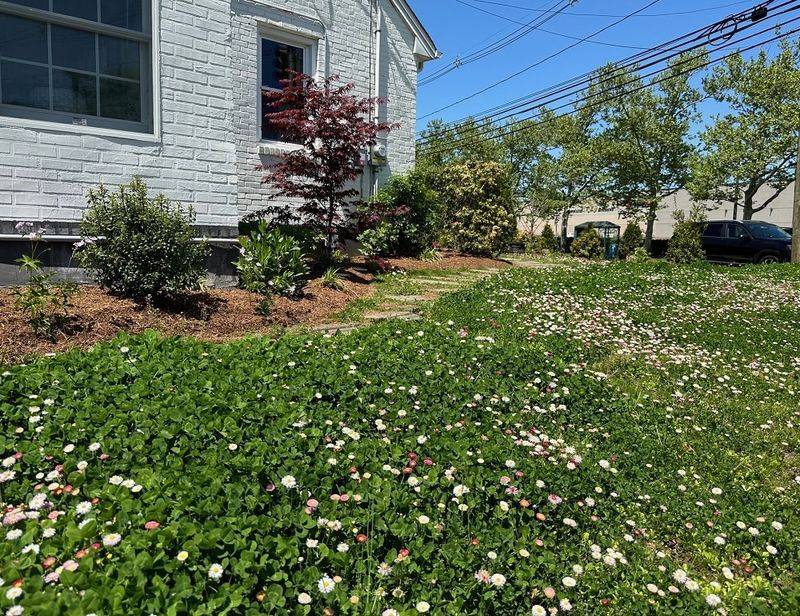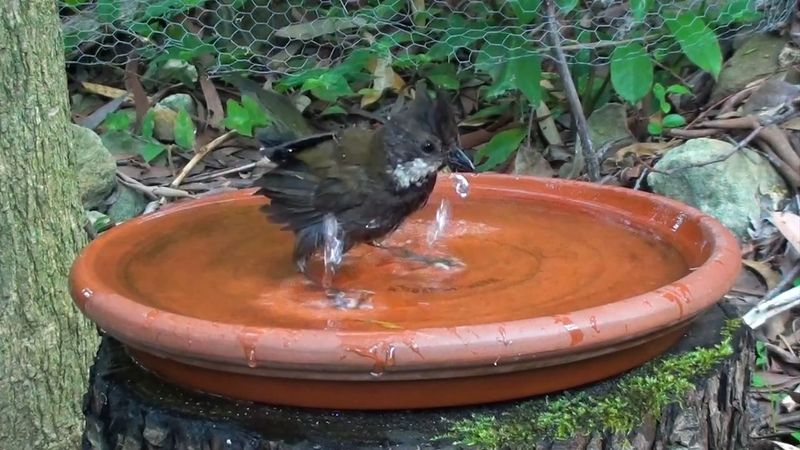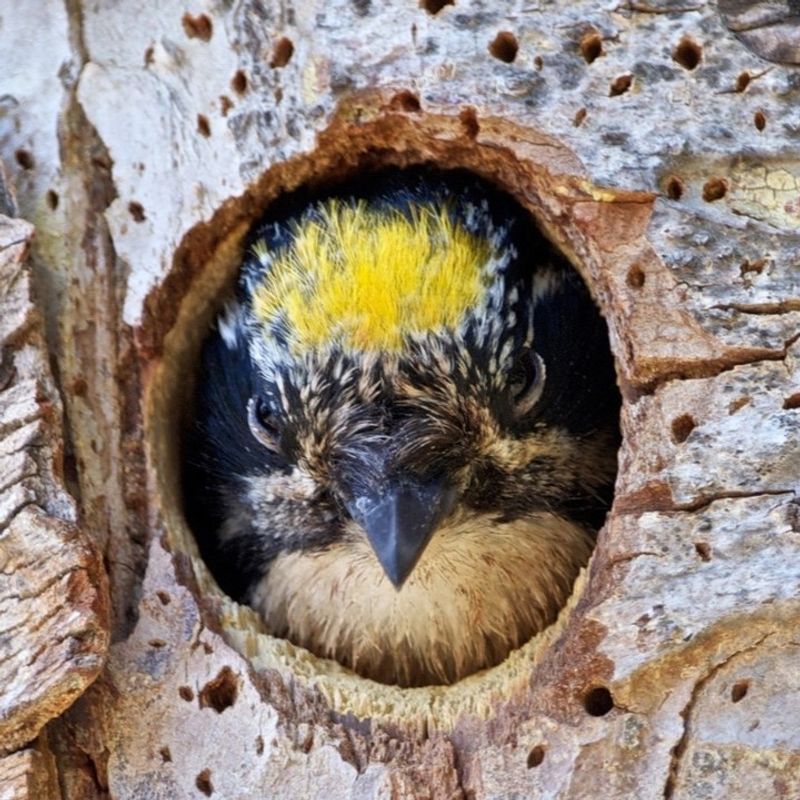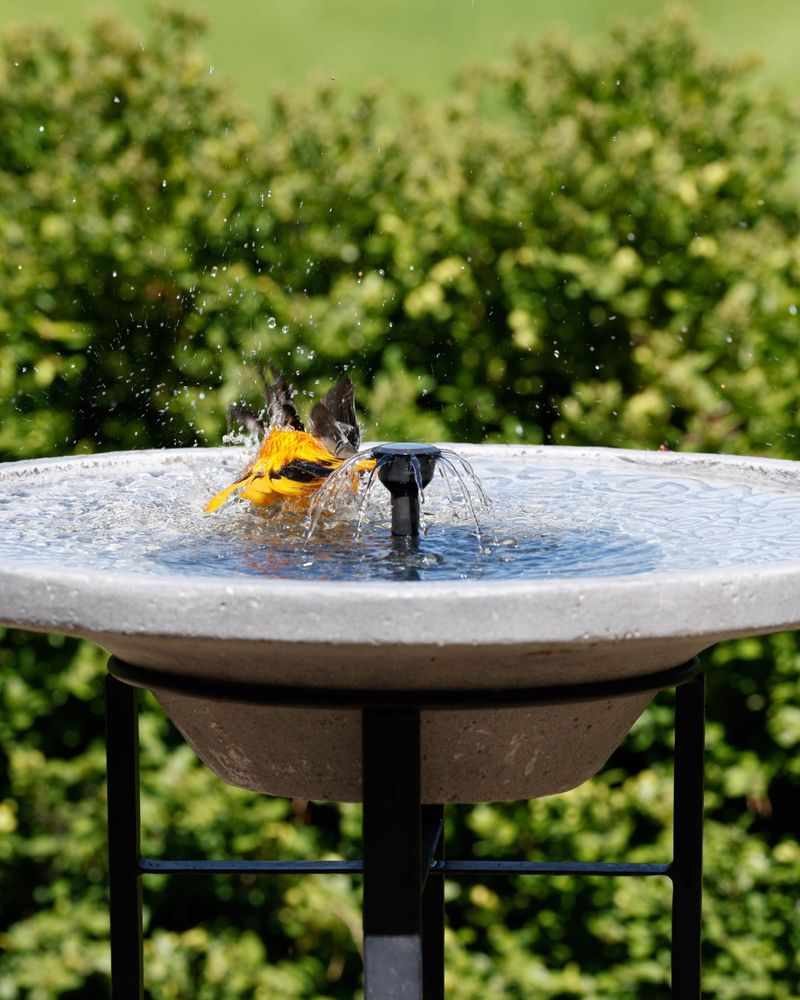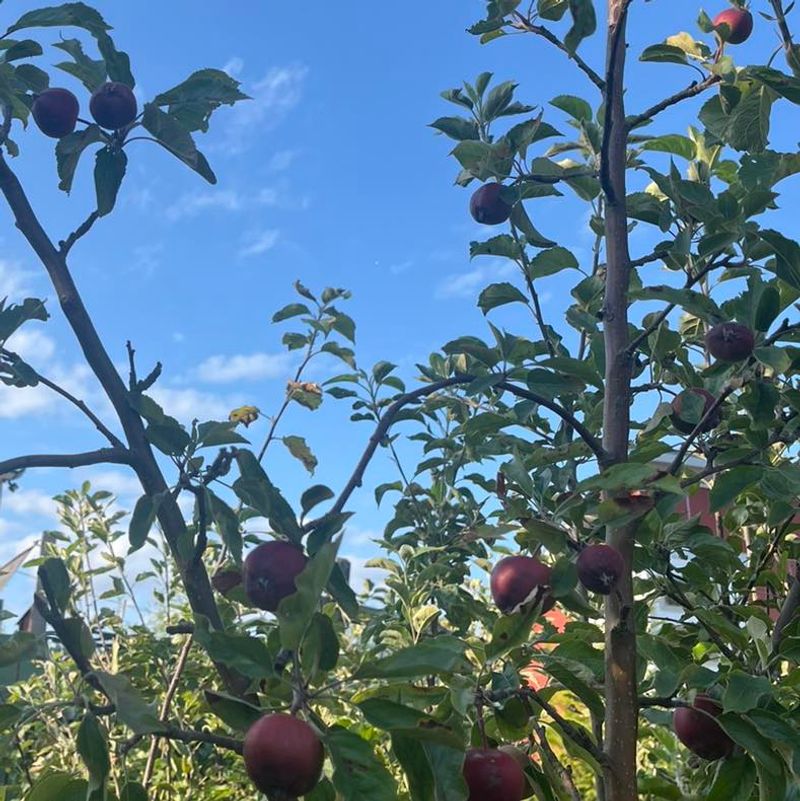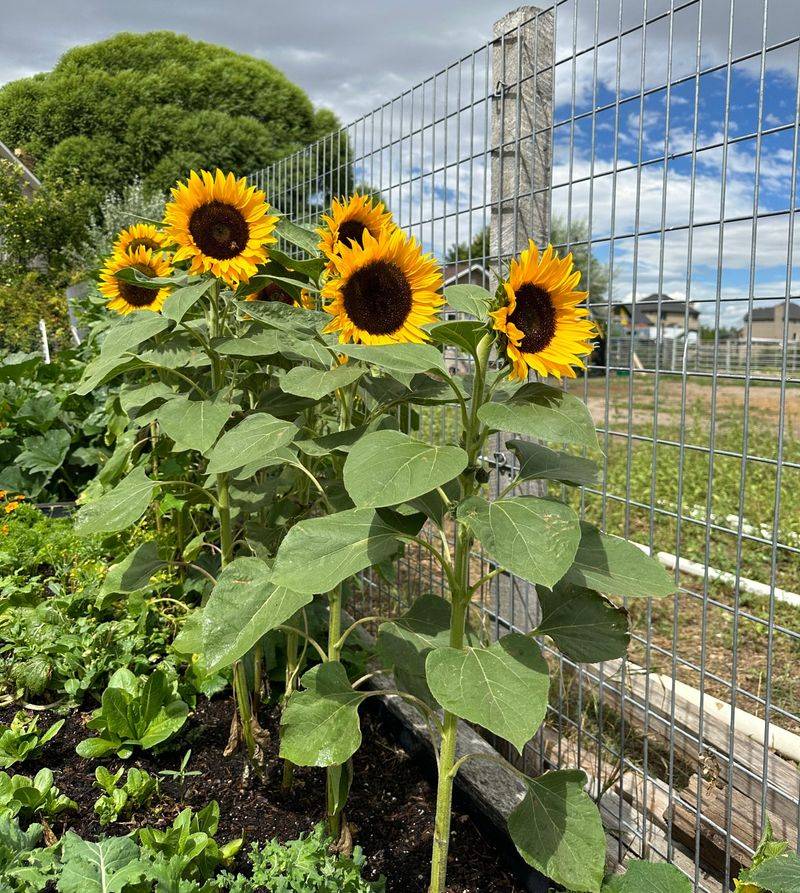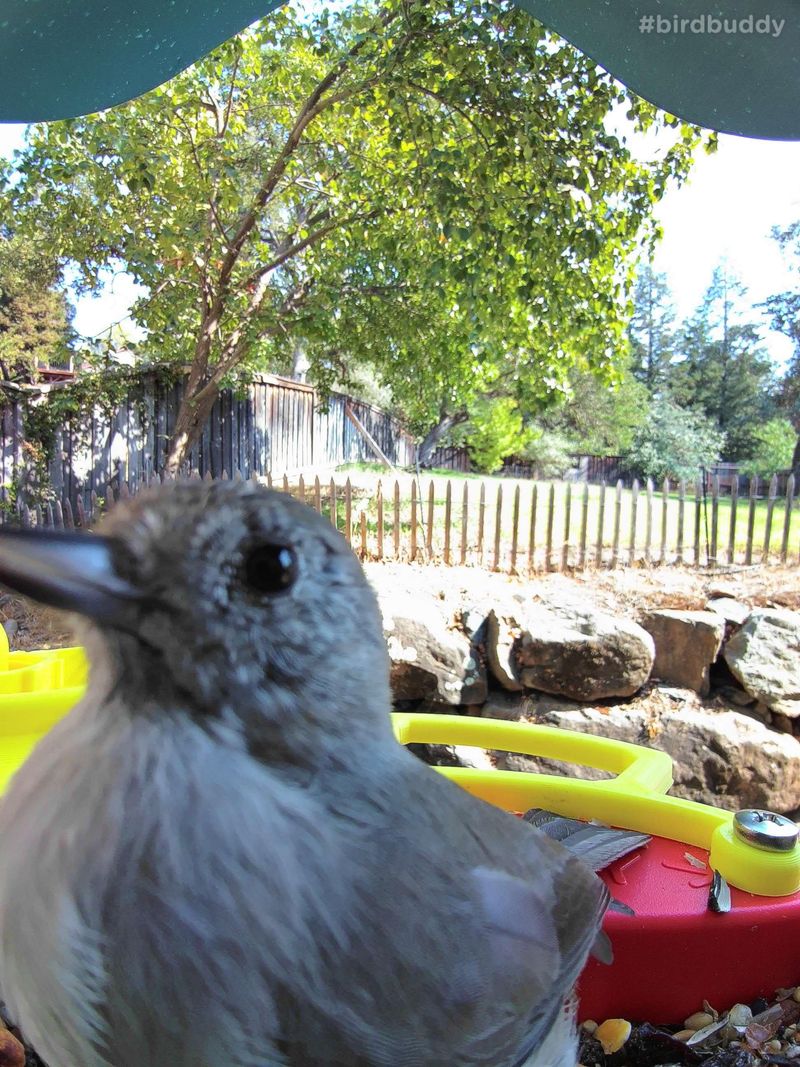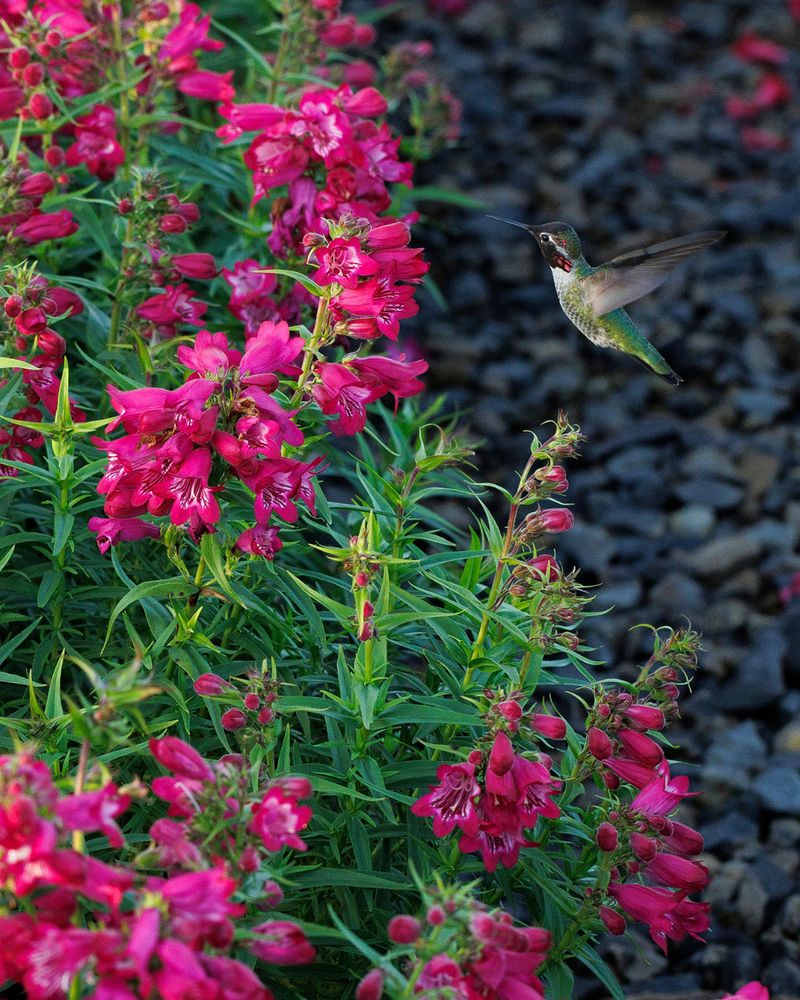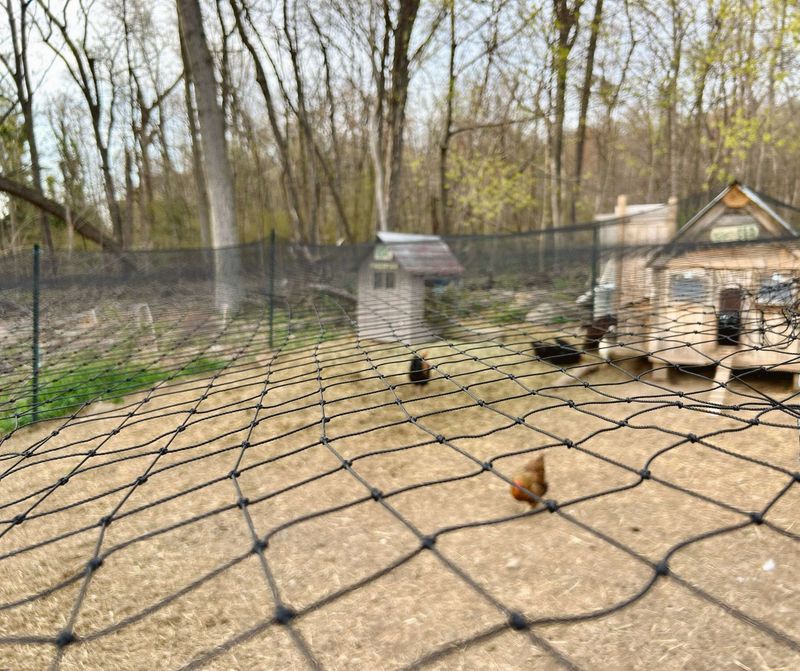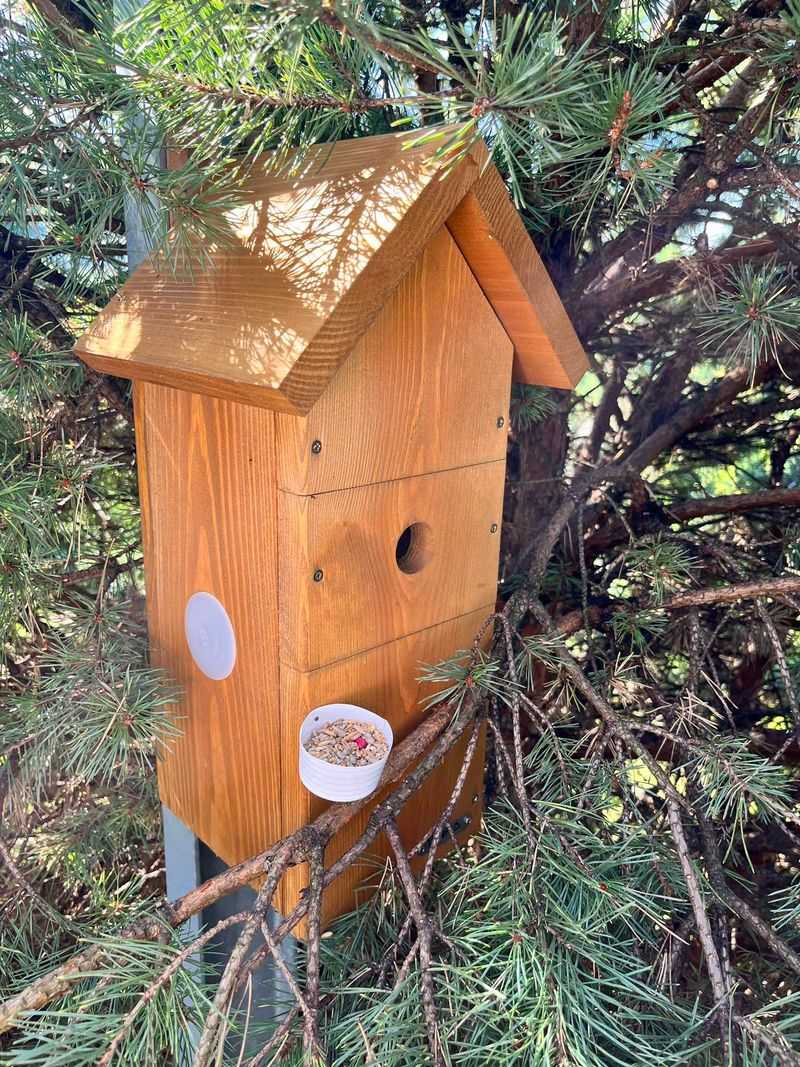Birds are the original gossip crew—if they love your yard, they’re definitely spreading the word. I’ve watched one little visitor turn into a whole feathered party in no time!
It all comes down to the little things that make them feel safe, fed, and a little spoiled. From the right snacks to cozy spots to perch, birds notice it all.
Let’s peek at what gets them chirping and calling in the crowd.
1. Clean Water Sources
Nothing attracts birds faster than reliable, fresh water. A simple birdbath placed where cats can’t ambush visitors becomes an instant hit in the avian community.
Remember to change the water regularly to prevent mosquito breeding and algae growth. During winter months, a heated birdbath might just make your yard the most exclusive bird spa in the neighborhood!
2. Native Plant Buffet
Birds flock to yards with native plants because they’ve evolved together over thousands of years. These plants produce exactly the kinds of berries, seeds, and nectar that local birds recognize and crave.
The relationship goes both ways—birds help spread seeds and pollinate while enjoying the feast. Your local nursery can recommend native species that will turn your yard into the bird equivalent of a five-star restaurant.
3. Multilevel Habitat
Birds appreciate yards with different heights of vegetation—ground cover, shrubs, and trees. This layered approach mimics natural habitats and provides multiple places to feed, hide, and nest.
Ground-feeding juncos might forage below while warblers flit through mid-level shrubs and woodpeckers work on tree trunks. Creating this vertical diversity makes your yard feel like prime real estate in the bird housing market.
4. Year-Round Feeders
Consistent food sources turn occasional visitors into regular guests. Different feeder styles attract different species—tube feeders for finches, platform feeders for cardinals, suet cages for woodpeckers.
Varying your seed offerings provides nutrition for diverse bird populations. Black oil sunflower seeds are the universal favorite, but nyjer seeds, safflower, and fruit attract specialized eaters who will spread the word about your gourmet offerings.
5. Brush Piles
What looks like yard waste to humans appears as luxury accommodations to birds. Stacking fallen branches and twigs into a loose pile creates instant shelter from predators and harsh weather.
These natural fortresses also attract insects that birds love to eat. Sparrows, wrens, and towhees particularly appreciate these wild corners where they can scratch for food and duck for cover when hawks patrol overhead.
6. Nesting Materials
During breeding season, birds become interior decorators, constantly searching for the perfect building supplies. Leaving out natural fibers like pet fur, small twigs, dried grass, and plant fluff makes your yard a one-stop shopping destination.
Hang mesh bags filled with these materials from tree branches in spring. Watching birds carefully select just the right pieces for their architectural masterpieces provides hours of entertainment while helping them create safe nurseries.
7. Chemical-Free Zones
Birds are extremely sensitive to pesticides and herbicides. These chemicals not only kill the insects birds need for food but can directly poison birds who ingest them.
Embracing natural gardening methods creates a safe haven that supports the entire food chain. The resulting abundance of insects might seem counterintuitive, but they’re actually a sign of a healthy ecosystem that will attract insect-eating birds like swallows and warblers.
8. Dust Bathing Spots
Many birds practice a peculiar cleaning ritual that looks like they’re taking a dirt bath. These dust baths help birds rid themselves of parasites and excess oil in their feathers.
Creating a small area of fine, dry soil in a sunny spot provides an essential grooming station. Sparrows, thrashers, and quail particularly love these dusty spas and will become regular patrons once they discover your accommodations.
9. Snag Trees
Dead trees might look unsightly to humans, but to woodpeckers, nuthatches, and chickadees, they’re prime real estate. These “snags” provide both food (insects living under bark) and potential nesting cavities.
If safe to do so, consider leaving dead tree trunks standing in your yard. For smaller spaces, installing nesting boxes designed to mimic these natural cavities offers birds the same benefits without the potential hazards of a full dead tree.
10. Moving Water Features
The sound of splashing, bubbling, or dripping water acts like a bird magnet. Even species that rarely visit feeders can’t resist investigating the sound of moving water.
Adding a small pump to a birdbath or installing a fountain creates an irresistible attraction. During migration seasons, these water features become essential rest stops, turning your yard into the avian equivalent of a popular highway oasis.
11. Fruit-Bearing Trees
Crabapples, serviceberries, and cherries create seasonal feeding frenzies that birds can’t resist. Cedar waxwings, robins, and orioles particularly love these fruity feasts and travel in flocks to find them.
The brilliant colors of these trees provide year-round beauty while offering critical nutrition. Some fruits persist through winter, becoming vital survival food during the leanest months when other food sources disappear beneath snow and ice.
12. Seed-Producing Flowers
Letting flowers go to seed instead of deadheading creates natural bird feeders. Sunflowers, coneflowers, and black-eyed Susans transform into self-service dining stations as their centers fill with nutritious seeds.
Goldfinches, chickadees, and sparrows particularly appreciate these standing buffets. The sight of small birds acrobatically clinging to swaying flower stalks adds winter interest to gardens while providing critical calories during cold months.
13. Sheltered Feeding Areas
Strategic placement of feeders near protective cover gives birds confidence to visit regularly. Positioning feeding stations about 10-12 feet from shrubs or trees provides quick escape routes from predators while preventing ambush spots.
This safety-conscious arrangement helps birds feel secure enough to linger. The most popular feeding stations combine this protective placement with multiple feeding options at various heights to accommodate different species’ preferences.
14. Hummingbird Havens
These tiny jewels have enormous appetites and exceptional memories for good feeding locations. Planting tubular flowers like salvias, bee balm, and trumpet vine creates natural nectar sources that hummingbirds patrol regularly.
Supplement these plantings with clean, fresh sugar water feeders. Hummingbirds are surprisingly territorial and will actually guard favorite feeding spots, creating entertaining aerial dogfights that make your yard the neighborhood’s best nature show.
15. Predator Protection
Birds constantly evaluate locations for safety. Reflective objects that deter window collisions and strategic placement of feeders away from places where cats can hide make birds feel secure in your space.
Consider the placement of bird houses and feeders carefully—about eight feet high and away from branches that predators could use as launching pads. These thoughtful safety measures earn your yard a reputation as a trustworthy sanctuary in the avian community.
16. Winter Shelter Options
Evergreen trees and dense shrubs become crucial survival zones during harsh weather. These plants block wind and precipitation while providing hiding places from winter predators like hawks.
Roosting boxes offer additional protection during the coldest nights. Multiple birds will crowd together in these shelters, sharing body heat to survive freezing temperatures. Installing these winter accommodations ensures your yard remains a bird hotspot even during the most challenging seasons.

